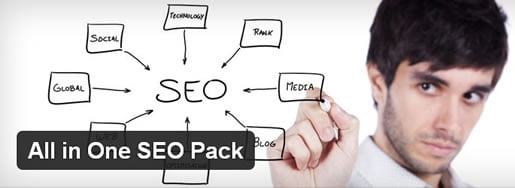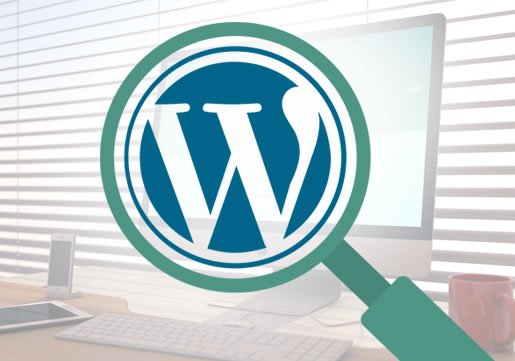WordPress is one of the best CMS for SEO. Maybe websites built in WordPress has the best possibilities for ranking in SERP, but that doesn’t mean that you don’t have to work on their optimization.
Like all other websites on the Internet, WordPress websites require certain settings so they become SEO friendly. With large number of WordPress themes, plugins and tricks you can achieve this in very short period.
No matter if you are serious WordPress publisher or you just want to start your own blog, everyone has the same goal to rank good in search results. This article will be your guide how to create SEO friendly WordPress website.
For SEO of WordPress website it is necessary to have knowledge about these crucial parameters:
- SEO friendly WordPress themes
- Key SEO plugins for WordPress
- SEO settings of WordPress
[divider_1px]
SEO friendly WordPress themes
First step before publishing WordPress website is choosing the right theme. This is very important factor and it is necessary that theme is developed in accordance with the requirements of SEO.
Many WordPress themes are declared as “SEO-friendly”, but if you aren’t developer or SEO expert, it’s hard to define does that theme fit its description.
We suggest that you consult with SEO expert before choosing WordPress theme no matter if it is free or premium version.
If you have required knowledge, read advices from the best SEO experts for WordPress and try to check theme on your own.
Avoid these mistakes:
- Setting website name on first place in title tag
- Adding static meta description tag – which is shown on every page
- Using static robots meta tags – tags like “index, follow” which hardens work for search engines. If we want to create some pages that are “noidnex” via plugin, that will not be possible because of this tag
- Using H1 tag for logo on every page – this tag has the highest priority so it has to be used only for title of the page. Google suggest only one H1 tag per page, so don’t waste it on the logo.
- Setting hidden links in theme – one link in footer section is enough and it belongs to creator of the theme.
- Sidebar below content of the page – content of the page has priority in HTML code. Sidebar is used depending on type of the page, but not beneath the content.
Theme has to provide:
- Display of taxonomy description – most of taxonomy archives displays only recent posts for specific category and they don’t have any unique content. WordPress has this function integrated so theme should display description, with taxonomy title in H1 tag.
- Display of archive excerpts – Archive pages with whole post shown aren’t good for SEO at all. This can be good if it is done for few posts on home page, but for archives it is not recommended.
- Breadcrumbs – great way to make good structure of inner links and make it easier for users and search engines to navigate through website. It is required that they work for taxonomies too.
- Use post title as first anchor text – it isn’t recommended to use “read more” text as first anchor text for post
- Code transparency – theme code has to be readable and fast loading as much as it is possible and it has to be easy for search engines to scan pages
There is no need for adding functions in theme that aren’t required like adding title and description, because there is already some good plugins which are provided for that.
Before final decision of choosing theme you should check these items:
- Theme loading speed (some themes have large number of JS which slow down loading)
- Responsive design (displaying of theme on different screen sizes)
- User experience and website architecture (important factor considered by Google)
- Compatibility with social networks (social media is important factor for SEO – enable easy connecting with social media websites)
[divider_1px]
Crucial SEO plugins for WordPress
When you create WordPress websites, default installation doesn’t provide complete set of its features (SEO plugins, backup, Google Analytics, etc.)
Take a look at WordPress plugins which will help you for optimizing your website.
All in one SEO

This is the most popular SEO plugin for WordPress. It supports XML site maps, Google analytics, robots.txt, Twitter cards, Open Graph and many more options which are necessary for good SEO. “All in one SEO” name says it all, it has almost everything that you need for SEO. This plugin is always updating with new features.
WordPress SEO by Yoast

Main competitor for All in one SEO plugin which offers similar functions. It has all necessary options for technical optimization and for writing good content. You can choose desired keyword while you writing article and check if it is optimized good.
Google Analytics

When you have website, you want to track how much visitor you have, where they come from, what they are doing on your website, merge effects of your marketing camping and many more, this plugin is exactly for that. Web Analytics is priceless tool for achieving good results for your online business.
Broken Link Checker

This plugin searches for broken links in your posts, comments and other content. This is useful option when you have large number of texts and you want that your website work without errors which can harm your rankings.
W3 Total Cache

This plugin is created to improve user experience and website loading speed by using advanced methods for cashing: browsers, pages, objects, databases, minimizing scripts and it offers support for CDN (content delivery network).
[divider_1px]
Advices for SEO adjusting of WordPress
After installing WordPress you will have default URL structure which will display links like: www.yoursite.com/?p=123
This URL type is meaningless for users and for search engines. Set URL structure in Settings->Permalink so it will have meaning for website users and search engines. Post name is often used option.
Besides URL structure you should carefully choose relevant keywords, right defining of title and description and heading tags, inner linking on website, using ALT text for images, connecting with social networks and what’s most important without quality content SEO is impossible.
From this point, SEO of WordPress website have the same rules for optimizing as all other websites.





